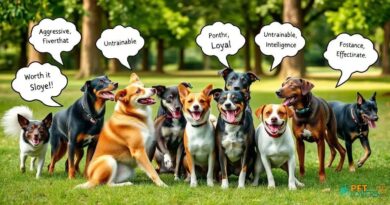O que é dog agility training
What is Dog Agility Training?
Dog agility training is a competitive sport that involves a handler directing a dog through a timed obstacle course. The course typically includes jumps, tunnels, weave poles, and other challenges that require both physical skill and mental focus. This sport not only showcases the bond between the dog and handler but also emphasizes the importance of training and communication.
The History of Dog Agility Training
Dog agility training originated in the late 1970s in the United Kingdom as a demonstration event at a dog show. It quickly gained popularity and evolved into a formal sport with established rules and competitions. The first official agility competition took place in 1980, and since then, it has spread worldwide, with various organizations governing the sport and hosting events.
Benefits of Dog Agility Training
Engaging in dog agility training offers numerous benefits for both dogs and their handlers. It promotes physical fitness, mental stimulation, and improved obedience. Dogs learn to navigate obstacles, enhancing their coordination and confidence. Handlers also develop better communication skills and a deeper understanding of their dog’s behavior, fostering a stronger bond between them.
Essential Equipment for Dog Agility Training
To participate in dog agility training, specific equipment is necessary. Common obstacles include jumps, tunnels, A-frames, seesaws, and weave poles. These items can be purchased or homemade, depending on the handler’s budget and space. Proper equipment ensures a safe and effective training environment, allowing dogs to practice and hone their skills.
Training Techniques for Dog Agility
Effective dog agility training involves various techniques, including positive reinforcement, clicker training, and gradual exposure to obstacles. Handlers should start with basic commands and gradually introduce more complex challenges. Consistency and patience are key, as each dog learns at its own pace. Regular practice sessions help reinforce skills and build confidence.
Choosing the Right Dog for Agility Training
While many breeds can participate in dog agility training, some are naturally more suited for the sport. Breeds like Border Collies, Australian Shepherds, and Shetland Sheepdogs excel due to their intelligence, agility, and eagerness to please. However, mixed breeds and other dogs can also thrive in agility training with the right motivation and training approach.
Agility Training Classes and Competitions
Many communities offer agility training classes led by experienced instructors. These classes provide structured learning environments where dogs can practice with others. Additionally, numerous competitions are held at local, regional, and national levels, allowing handlers to showcase their skills and compete for titles. Participating in competitions can be a rewarding experience for both dogs and handlers.
Common Challenges in Dog Agility Training
Handlers may face various challenges during dog agility training, such as distractions, fear of obstacles, or lack of focus. Addressing these issues requires patience and understanding. Implementing gradual exposure techniques, using high-value rewards, and maintaining a positive training atmosphere can help overcome these challenges, ensuring a successful training experience.
Maintaining Your Dog’s Health During Training
As with any physical activity, maintaining your dog’s health during agility training is crucial. Regular veterinary check-ups, a balanced diet, and proper hydration are essential. Additionally, handlers should monitor their dog’s physical condition and avoid overtraining, which can lead to injuries. A well-cared-for dog is more likely to enjoy and excel in agility training.
The Future of Dog Agility Training
As dog agility training continues to grow in popularity, new techniques, equipment, and training methods are emerging. Innovations in training technology and increased accessibility to competitions are making the sport more inclusive. The future of dog agility training looks bright, with more enthusiasts joining the community and fostering a love for this exciting and rewarding sport.




